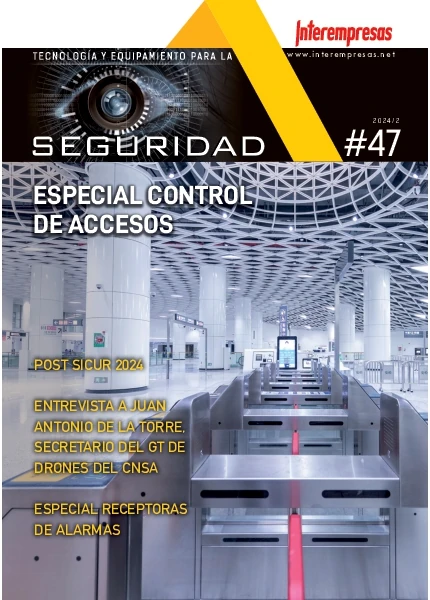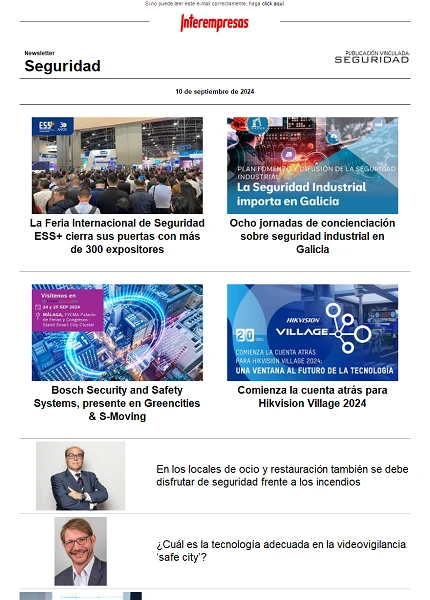New norm in the horizon: corporal armours in the labour field

Around the middle of 2012, circulated in the technical committee European TC 162 on clothes of protection the first draft of the prenorma European prEN 16488, that is allocated to define the requirements of provision that have to fulfil the corporal armours allocated to protect in front of the aggressions with weapon of fire and/or white weapon (knives, quills, pinchos, etc.). Usually the corporal armours consist in a piece with a support that contains one or more panels of armour that are designed to provide protection against one or more threats on the whole or the majority of the torso. The support can contain also modular insertions like plates of armour.
The objective user of this type of armours are those workers (civilians) that in his daily activity are exposed to the risk to suffer attacks of white weapon or of weapon of fire. The destined equipment to protect of the same risks to the personnel of the strengths and bodies of hygiene of the State or to the Army are out of the object and field of application of these norms.
This norm finds in a very early phase of manufacturing and foresees that the works of normalisation can be finishings in the year 2014. Therefore, from today until then the prenorma can experience changes of diverse magnitude.
When this norm was approved, will be the first of field totally European that define the requirements that have to fulfil this type of equipment. Up to now in Europe, exist two norms of field only national that apply to this type of equipment:
- Norms of corporal armour of the HOSDB (Home Office Scientific Development Branch) (2007). Rule for corporal armour of the strengths and bodies of hygiene of the United Kingdom.
- Managerial German Technician on protection against aggressions by arms of fire and white Ballistische Schutzwesten give Unterausschusses Führungs - und Eisantzmitel (December 2003).
Remember that in spite of that it does not exist a norm harmonised for all the EU, the bulletproof waistcoats allocated to the protection of civil personnel himself are considered Equipment of Individual Protection (EPI) and go in inside the field of application of the Directive 89/686/CEE, being classified by this like EPI of Category II.
Of parallel form, in other parts of the world also exist specific norms for the destined pieces to protect in front of aggressions by apuñalamiento and/or shots:
- NIJ 0101 – Series of norms of the National Institute of Justice EE UU that defines the requirements of the corporal armours in front of arms of fire.
- NIJ 0115.00 – Norm of the National Institute of Justice of EE UU that defines the requirements of the corporal armours in front of apuñalamientos.
- Renar MA.01-To1 - Norma of the National Register of Arms of Argentina that contains the requirements that have to fulfil the bulletproof waistcoats.
In this article will give some brief orientations to informative title to treat that the users of this type of equipment can do an approximate idea of the main requirements of this future European norm.
Levels of protection
The norm defines three levels of protection in front of arms of fire and four levels of protection in front of the aggressions by white weapon. In the table 1 and in the table 2 can see the distinct levels of protection and a brief description of each one of them:
|
Code of class |
Name of the class |
Description of the class |
|
G1 |
Protection against arms of fire class 1 |
soft Armour |
|
G2 |
Protection against arms of fire class 2 |
soft Armour with plates of armour |
|
G3 |
Protection against arms of fire class 3 |
soft Armour with plates of rigid armour |
|
Code of class |
Name of the class |
Description of the class |
|
K1 |
Protection against knives class 1 |
soft corporal Armour for general use for situations of low risk that protects against stabs with a strength of apuñalamiento according to the Class K1 |
|
K2 |
Protection against knives class 2. |
soft corporal Armour for in situations of half risk that protects against stabs with a strength of apuñalamiento according to the Class K2 |
|
K1+S1 |
Protection against knives class 1 and protection against quills class 1 |
soft corporal Armour for general use for situations of low risk that protects against stabs with a strength of apuñalamiento according to the Class K1 and apuñalamiento with quills according to the class S1. |
|
K2+S2 |
Protection against knives class 2 and protection against quills class 2 |
soft corporal Armour for use in situations of riesgo half that protects against stabs with a strength of apuñalamiento according to the Class K2 and apuñalamiento with quills with a strength according to the class S2. |
The prEN 16488 foresees the existence of corporal armours that offer protection combined in front of arms of fire and white weapon.
The protection against the bullets establishes a series of levels of provision whose difference from the technical punto bases essentially in the type of ammunition with which test the samples. In the table 3 specifies the type of ammunition with which the prenorma establishes the essay of the pieces.
|
Level of protection |
Type bleats (calibrate, mm) |
|
G1 |
Encamisada (9x19) |
|
G2 |
Solid (9x19) |
|
G3 |
Encamisada (7,62x51) |
|
Encamisada/perforante (7,62x51) |
In the case of the protection against white arms the difference between the distinct levels of provision does not base in the type of knife used, but in the power of the impact exerted on each sample that goes from the 24 J for the lowest levels of protection to the 50 J that arrive to employ in the level K2.
Ergonomic considerations
The ergonomics is a factor that every time is adopting a greater importance to the hour to draft the new relative norms to Equipment of Individual Protection. The case of the prEN 16488 could not be an exception and the new corporal armours will not have to restrict excessively the movements of head, arms, torso and legs. Likewise they will have to subject to a series of essays of mobility of practical type in which it will not have to move during extreme movements that can prevent to the user an answer in front of a situation of danger. Besides will take into account the level of activity and the environingingmental conditions to warn possible problems caused by severe thermal sensors stress.
In this sense, the corporal armours according to the prEN 16488 designed specifically for women will have to be subjected to additional essays with points of impact and additional shot in the most vulnerable zones of this type of armours as they are the upper zone of the breasts and the points situated in the transition between the breast and the breast of the armour.
Bibliography
- Or.S. Department of Justice. Office of Justice programs. National Institute of Justice. Selection and Application. Guide to Personal Body Armor. [On line] https://www.ncjrs.gov/pdffiles1/nij/189633.pdf.
- Home Office Sicentific Development Branch. HOSDB Body Armour Standards for UK Police (2007) Part 1: General Requirements. [On line] http://www.bsst.de/content/pdf/39-07-a_-_hosdb_body_armour1.pdf.
- Home Office Development Branch. HOSDB Body Armour Standards for UK Police (2007) Part 2: Ballistic Resistance. [On line] http://www.bsst.de/content/pdf/39-07-b_-_hosdb_body_armour1.pdf.
- Home Office Scientific Development Branch. HOSDB Body Armour Standards for UK Police (2007) Part 3: Knife and Spike Resistance. [On line] http://www.bsst.de/content/pdf/39-07-c_-_hosdb_body_armour1.pdf.
- Ministry of Justice and Human Rights. National register of Arms. Bulletproof waistcoats. Norma RENAR MA.01-To1. [On line] http://www.renar.gov.ar/pdf/normarenarma01a1anexo.pdf.
- CEN. prEN 16488-1:2012. Clothes of protection - corporal Armour - Splits 1: general Requirements.
- —. prEN 16488-2:2012. Clothes of protection - corporal Armour - Splits 2: Resistance to the bullets, requirements and methods of essay.
- —. prEN 16488-3:2012. Clothes of protection - corporal Armour - Splits 3: Resistance to knives and quills, requirements and methods of essay.




























